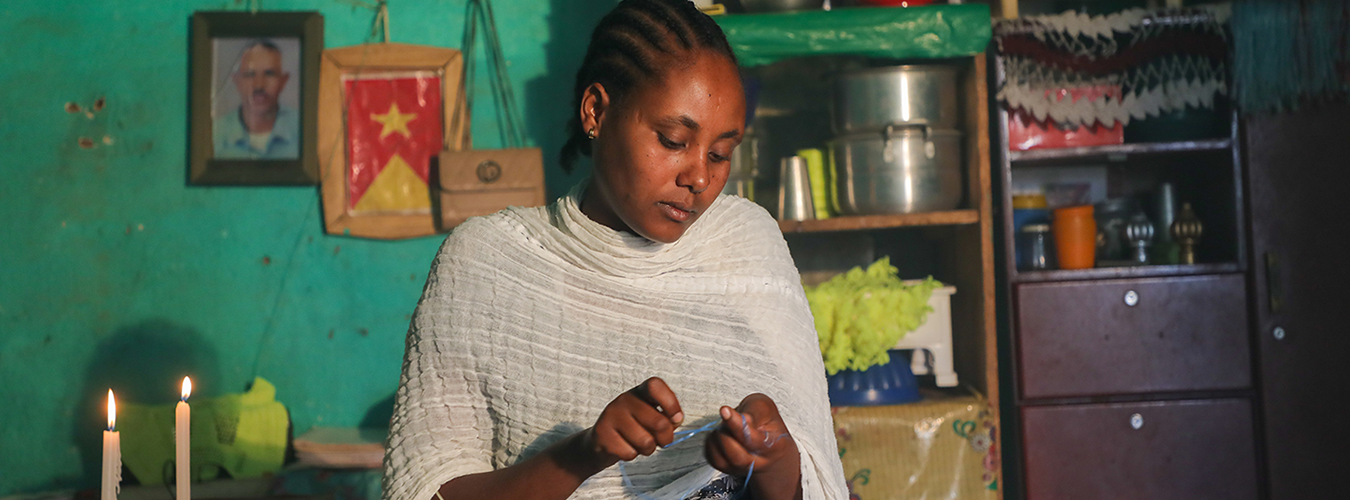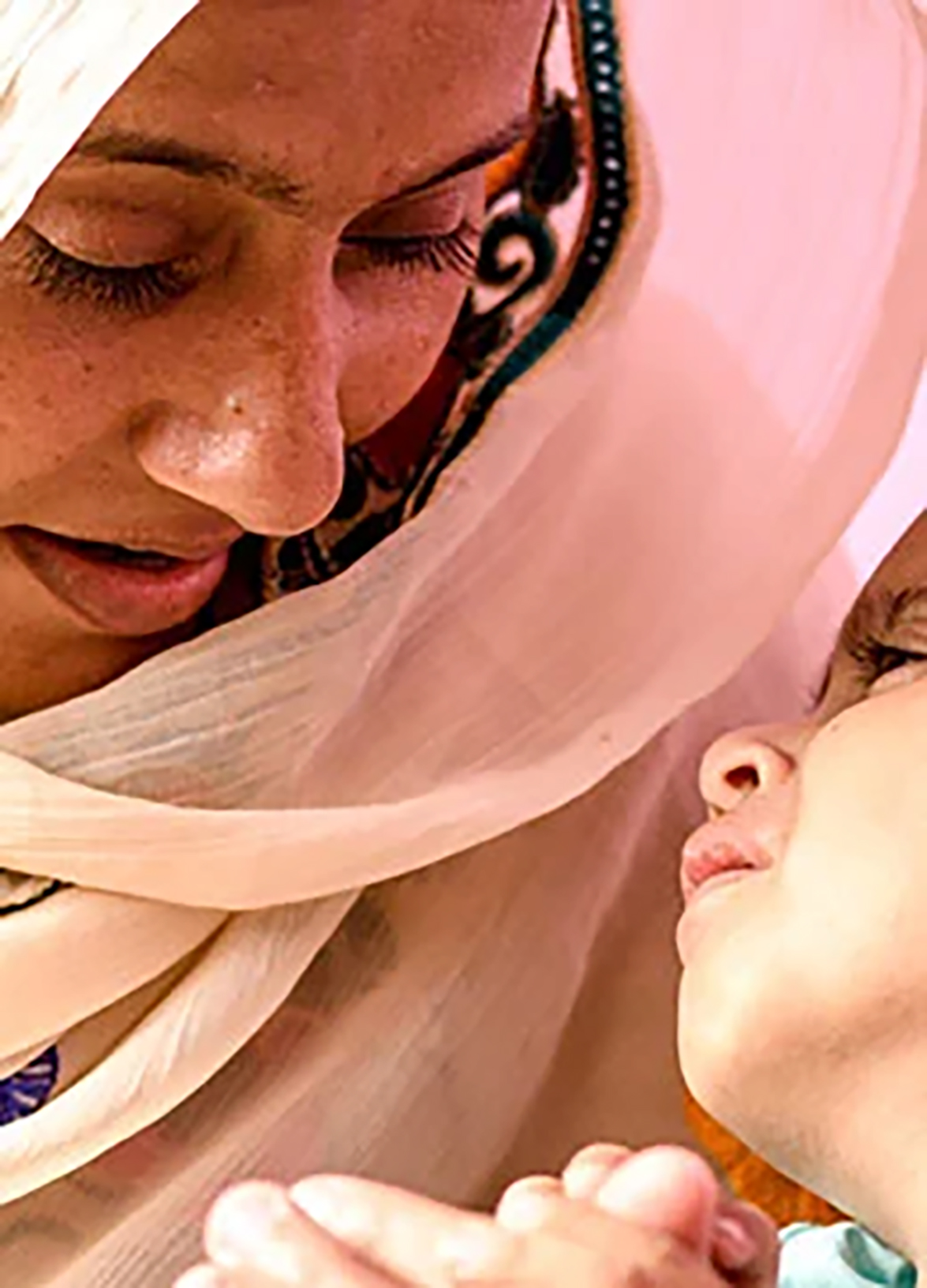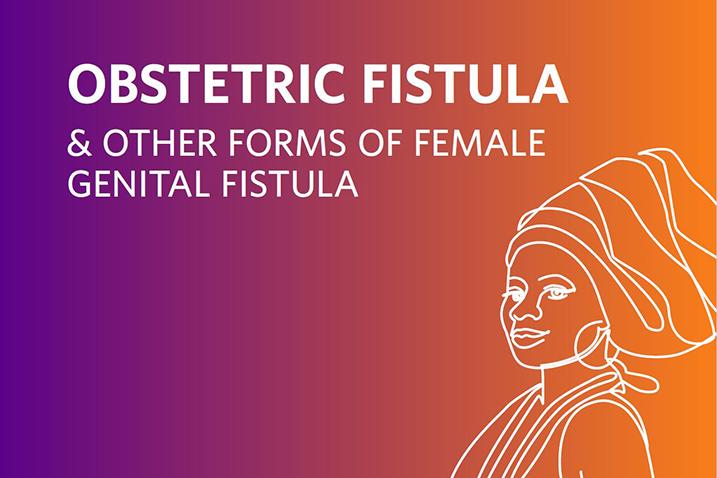International Day to End Obstetric Fistula | United Nations (original) (raw)

Yeman Mihret, an obstetric fistula survivor and recipient of rehabilitation programme supported by UNFPA, working on a handcraft at the Hamlin Fistula Center, Megab.
Photo:© UNFPA Ethiopia/MOPIX Production
Breaking the Cycle: Preventing Fistula Worldwide
Obstetric fistula is a hole between the birth canal and bladder or rectum, caused by prolonged, obstructed labour without access to timely, high-quality medical treatment. It leaves women and girls leaking urine, faeces or both, and often leads to chronic medical problems, depression, social isolation and deepening poverty. Ninety percent of pregnancies involving fistula end in stillbirth.
The global landscape of maternal health has seen significant strides in recent years, yet the specter of obstetric fistula persists, particularly in lower- and middle-income countries. While pregnancy and childbirth are generally safer than ever before, thousands of women still endure the devastating consequences of obstetric fistula annually. This childbirth injury, resulting from prolonged and obstructed labor, is not just a medical issue but a reflection of systemic inequalities ingrained within societies.
This year’s theme, “Breaking the Cycle: Preventing Fistula Worldwide”, underscores the urgent need to address obstetric fistula comprehensively, emphasizing equitable access to quality maternal health services, social reintegration, and sustained investment in healthcare systems.
Ending obstetric fistula by 2030
In 2003, United Nations Population Fund (UNFPA) and its partners launched a global Campaign to End Fistula, in line with international targets to improve maternal and newborn health and with the goal of making obstetric fistula as rare in developing countries as in the developed world.
In 2018, the United Nations General Assembly adopted a resolution to end it by 2030.
Ending fistula globally demands strong political leadership, strategic and urgent intervention, significantly increased resources and strengthened collaboration between governments, partners, civil society, health care providers, women and communities.
Obstetric fistula is preventable; it can largely be avoided by delaying the age of first pregnancy; the cessation of harmful traditional practices; and timely access to obstetric care.
Despite improvements in overall pregnancy safety, health systems and communities continue to struggle to ensure safe childbirth, resulting in tens of thousands of women and girls sustaining injuries like obstetric fistula annually. Furthermore, Climate change and obstacles presented by the coronavirus disease (COVID-19) pandemic exacerbate the root causes of fistula.
Considering the complexities posed by these challenges, it is imperative now more than ever to call on the international community to use the International Day to End Obstetric Fistula to significantly raise awareness and intensify actions towards ending obstetric fistula, as well as urging post-surgery follow-up and tracking of fistula patients.
Did you know?
- Nearly half a million women and girls worldwide are living with obstetric fistula. Thousands of new cases occur annually.
- For every maternal death, 20 - 30 additional women experience childbirth injuries that significantly affect their quality of life and well-being.
- 9% of instances of obstetric fistula result in stillbirths.
- Over the past two decades, UNFPA has supported 140,000 fistula repair surgeries; over 12,000 women and girls received social reintegration support between 2018 and 2023.
- Midwives provide the majority of first-line maternity care and are key to preventing fistula and other childbirth injuries. In 2021, the global shortage of midwives is estimated at 900,000, of which 500,000 are needed in sub-Saharan Africa alone.
Related links
- Campaign to end Fistula
- UN Population Fund (UNFPA)
- Nairobi Summit Commitments on ICPD25
- World Health Organization - 10 facts about obstetric fistula
- WHO: End fistula. Restore Women's Dignity
Related documents
- UN Secretary General’s Report
- Resolution on supporting efforts to end obstetric fistula (2012)
- Resolutions on intensification of efforts to end obstetric fistula (2014 and 2018)
Guiding principles for clinical management and programme development
The so-called “orange manual” has long been the only authoritative, gold-standard guide to the holistic, comprehensive and “bigger picture” aspects of eliminating obstetric fistula (including programming, policy, prevention, treatment, social reintegration and more). The original (2006) version of the manual has now been updated with the latest evidence, strategies, tools and resources.
Why do we mark International Days?
International days and weeks are occasions to educate the public on issues of concern, to mobilize political will and resources to address global problems, and to celebrate and reinforce achievements of humanity. The existence of international days predates the establishment of the United Nations, but the UN has embraced them as a powerful advocacy tool. We also mark other UN observances.


